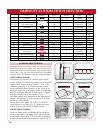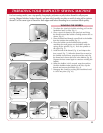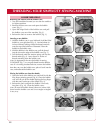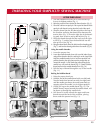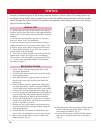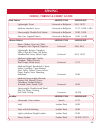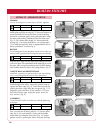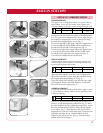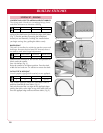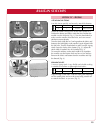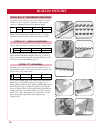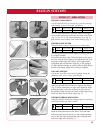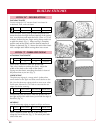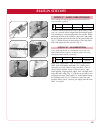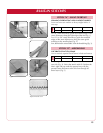
18
OVEREDGING LIGHT TO MEDIUM WEIGHT FABRICS
The zigzag stitch is handy for overedging facings, hems,
and seam allowances to minimize raveling.
Position the fabric under the presser foot so the right
swing of the stitch forms just inside the edge of the fabric
[Fig. 1]. Test the position by turning the handwheel
toward you and manually "walking" the needle before
you begin sewing. Sew, guiding the fabric evenly.
BARTACKING
This stitch is excellent for reinforcing pocket corners and
belt loops. Because the feed teeth are lowered, there is
no need to make stitch length adjustments.
Determine the location for the bar tack and position the
fabric under the needle.
Sew 4-6 stitches [F
ig. 2].
Raise the needle to its highest position. T
urn the stitch
width dial to 0 and sew 3-4 stitches to secure the stitch.
SATIN STITCH APPLIQUÉ
Use this popular, zigzag stitch creatively to sew appliqués.
Fuse a fabric appliqué shape to a base fabric. Place a
stabilizer beneath the base fabric [Fig. 3].
Satin stitch around the cut edges of the appliqué shape
guiding the fabric so the right s
wing of the stitch falls just
over the appliqué edge and into the base fabric [Fig. 4].
BUILT-IN STITCHES
STITCH “A” - ZIGZAG
Fig. 1
Fig. 2
Bartack
Overedging
STITCH STITCH WIDTH STITCH LENGTH PRESSER FOOT
A 3-5 2 Overcast
STITCH STITCH WIDTH DROP FEED PRESSER FOOT
A 4-5 Lowered All-purpose
Appliqué
Fig. 3
Fig. 4
STITCH STITCH WIDTH STITCH LENGTH PRESSER FOOT
A 3-5 0.5-1 Open toe



